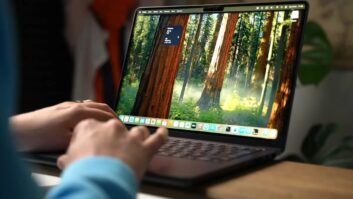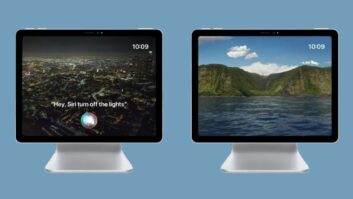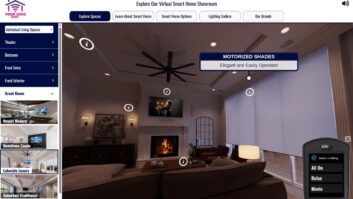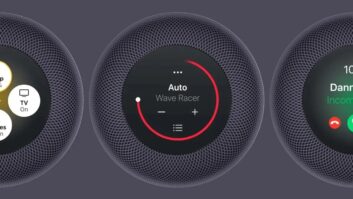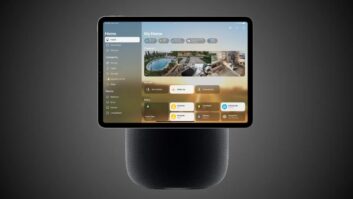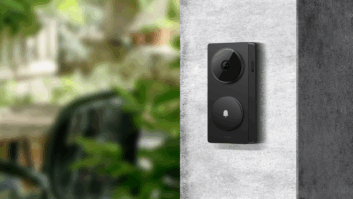San Francisco – Apple will catch up with the many of its smartphone competitors with the launch of its first 4G smartphone, which incorporates 4G LTE and 4G HSPA+21Mbps wireless technology.
The phone, called the iPhone 5, sports a bigger screen at 4 inches from 3.5 inches, thinner chassis at 0.29 inches from 0.37 inches, lighter weight at 3.95 ounces vs. 4.93 ounces, and a processor said to be twice as fast as the iPhone 4’s processor.
Apple called the phone the thinnest smartphone in the industry.
The iPhone 4S’s processor was a dual-core A5 processor whose speed has never been revealed by Apple, but bench tests have clocked it at 800MHz.
Graphics speed is also said to have been doubled.
Screen resolution has been improved from 960 by 640 to 1,136 by 640, which is below the HD resolution of many high-end smartphones. Pixels per inch remains the same at 326, and aspect ratio is close to 16:9. The screen was made taller but not wider than the existing phone’s display.
The phone also chucks the near-decade-old 30-pin connector for a eight-pin connector that’s 80 percent smaller, called Lightning, and is double-sided. The company will offer 30-pin-to-nine-pin adapters for people with older accessories. Additional details weren’t available
Companies such as Bose, JBL, Bowers & Wilkins, and Bang & Olufsen are working on tabletop docking speakers, the company said.
The phone, which will feature Apple’s new iOS 6 operating system, is due in the U.S. on Sept. 21 at the same price as its predecessor. The 16GB version is $199, the 32GB model is $299, and the 64GB model is $399.
The 16GB iPhone 4S version will be available at $99.
iPhone 5 phones will be available for AT&T, Verizon and Sprint but not T-Mobile, which operates a 4G HSPA+ network but plans to launch LTE next year.
Other improvements include 40 percent faster photo capture, a front camera that’s now 720p to join the rear 1080p camera, panorama mode for picture taking, ability to take a picture while taking videos, three microphones, wider audio spectrum, improved speakers, FaceTime over cellular, spoken turn-by-turn driving instructions, and other enhancements enabled by the iOS 6 operating system.
The new phone is thinner in part because its uses in-cell touchscreeen technology, which embeds sensors inside the LCD panel instead of in a separate layer on top of the LCD panel.
Despite being thinner, the new iPhone offers eight hours of battery life for talking, the same as the iPhone 4S. Web browsing time is eight hours on 3G or 4G LTE and 10 hours via Wi-Fi.
Wi-Fi has also been upgraded to include dual-band Wi-Fi 802.11n to boost speeds to 150Mbps.
AT&T and Verizon could be best positioned to sell the most iPhones because their LTE networks are widespread, whereas Sprint’s LTE network currently operates only in nine cities in five metro areas, though the company plans to expand its LTE network to markets with 123 million people by the end of the year and, by the end of 2013, reach 250 million people out of its 3G population base of 282 million.
Although the phone incorporates HSPA+ 21Mbps technology to work in AT&T HSPA+ network markets where AT&T hasn’t yet rolled out LTE, the phone won’t work in T-Mobile’s HSPA+ network, which operates in a different band than AT&T.
Nonetheless, T-Mobile plans to encourage owners of older HSPA+ iPhones to unlock their phones and bring them over to T-Mobile to take advantage of lower-cost service and unlimited-data plans. On T-Mobile’s network, however, the phones will operate in much-slower 2G mode until the company migrates its HSPA+ technology to the 1,900MHz band, which AT&T iPhones can access.
For now, T-Mobile offers 1,900MHz HSPA+ in a handful of cities, such as cities like Seattle, Las Vegas, Washington and the New York metro area.
The new iPhone’s iOS 6 operating system, available for download to other iOS devices at a date that wasn’t announced, adds multiple new features to Apple devices, including voice-announced turn-by-turn driving instructions on Apple’s navigation app, Facebook integration with iPhone contact and calendar applications, Yelp and OpenTable integration, the addition of FaceTime video chat over cellular instead of only over Wi-Fi, ability to save web pages for offline reading and iCloud Tabs to let users save web pages between devices. There is also a Passbook app to store airline boarding passes, loyalty cards and retail coupons in one location.
Improved Siri voice recognition will let users ask sports-related questions. New calling features include the ability to decline an incoming call by sending a text message, blocking calls except for those from callers given priority, and an email interface said to be easier to use.
For its part, IHS iSuppli said the iPhone launch will spur a sequential second-half rebound in Apple shipments following a 26 percent sequential decline in the second quarter to 26 million units. In the second quarter, consumers postponed iPhone purchases in hopes of a new model later in the year, IHS said.
Apple’s second-quarter decline contributed to a second-quarter contraction in global smartphone shipments by 1 percent to 137 million units, IHS said. IHS expects global smartphone shipments to rise in the second half to 346.5 million units shipping in the second half, up from a first-half 272.3 million.
Although Ovum expects the iPhone launch “will be Apple’s most successful smartphone to date,” it warns that Apple must redesign its user interface and software platform in the next two years or else “find itself in a position similar to Nokia and RIM, which found themselves with outdated smartphone platforms that need replacing.”





